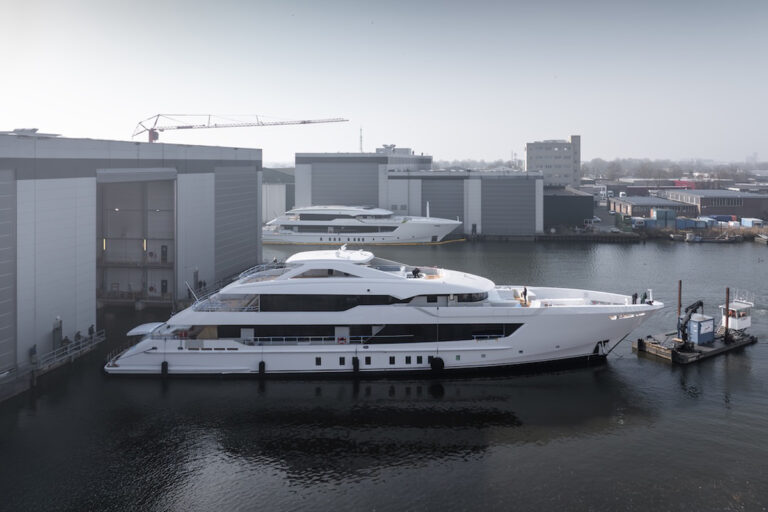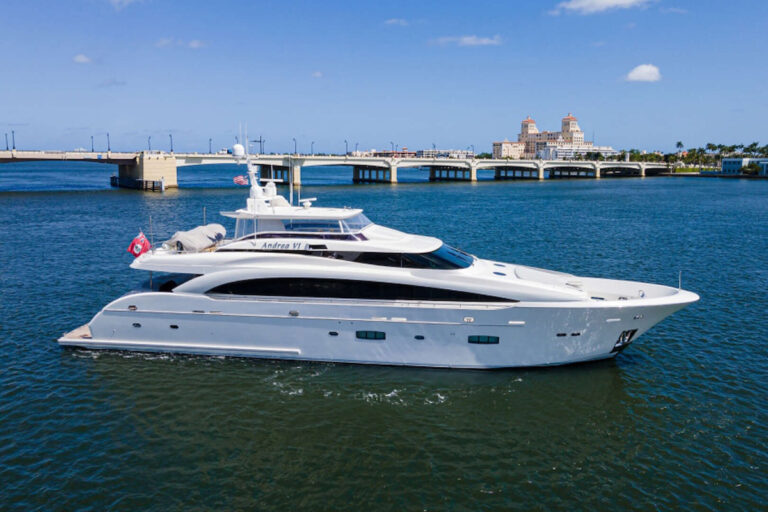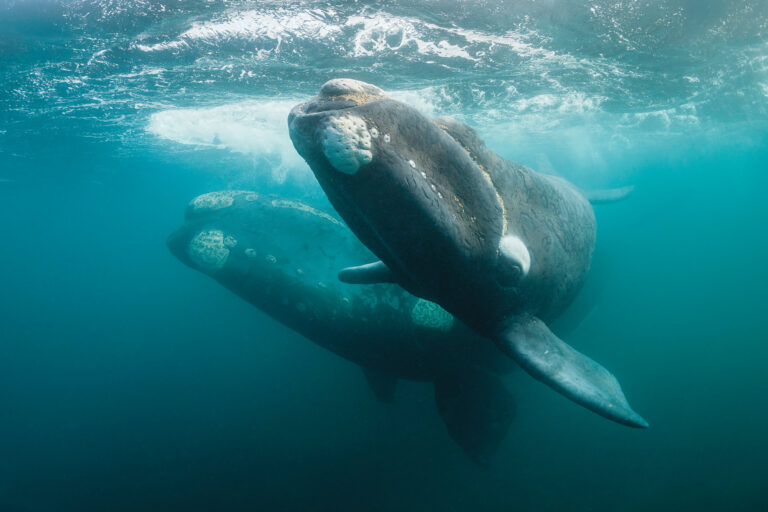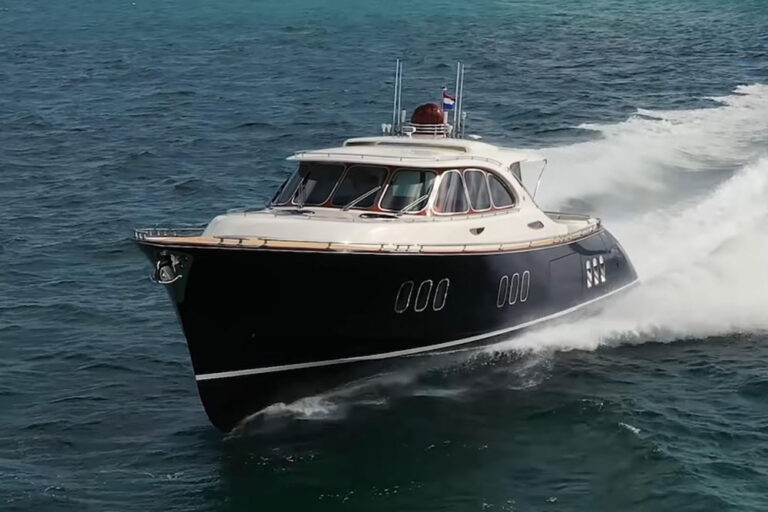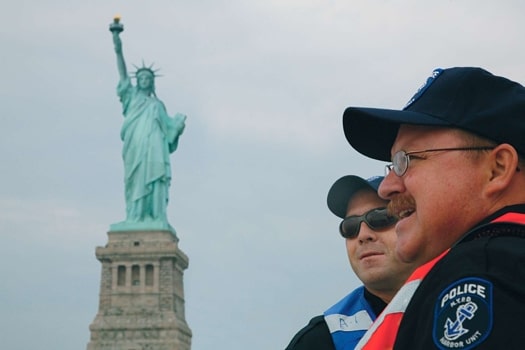
HarborPatroldec1.jpg
In the beginning there were only 12 rowboats, manned by crews of five. They patrolled the busy waterfront where thieves flourished, and in the harbor, they safeguarded merchant ships at anchor from increasingly emboldened pirates. It was 1858, and since crime had taken to the water, so did the New York City Police Department.
Today, the NYPD Harbor Unit is state of the art. There are 150 officers, each with at least three years of police experience and substantial prior knowledge of boating, who had to apply, qualify, and then be appointed by the police commissioner. They are on duty 24 hours a day, seven days a week, 365 days a year. Gone are the days of rowboats- they have an assortment of vessels docked at Harbor Charlie, in Brooklyn’s Army Terminal: 25-foot fiberglass Parkers, 27- and 31-foot Safe Boats, and 30-, 36-, and 55-foot aluminum Gladding-Hearns.
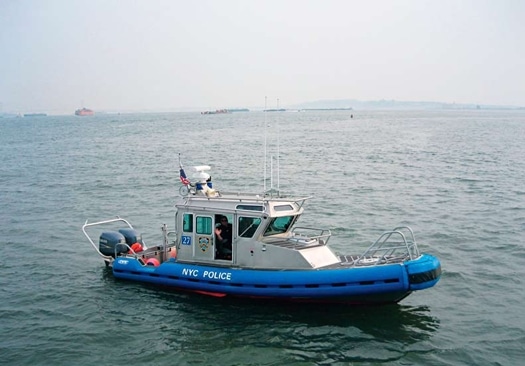
| |One of the Harbor Unit’s Safe Boats.|
With 176 miles of coastline to patrol and 576 square miles of navigable waters in their jurisdiction, it’s no wonder they keep a fully equipped SCUBA boat ready to go, around the clock. They also have a Sea and Air Rescue helicopter on constant call from Floyd Bennett Field in Brooklyn and the very latest in high-tech gadgets-like the Remote Operator Vehicle, or R.O.V. Encased in a bright yellow suitcase with a pop-up screen, this device is armed with a waterproof camera and dropped into the water. The boat-based operator then maneuvers it by joystick to send back images of its target. It’s used to patrol beneath the waterline-for drugs stashed on hulls, bombs planted beneath bridges, and anything else that’s out of the ordinary. But all this equipment doesn’t necessarily make the job cushy.
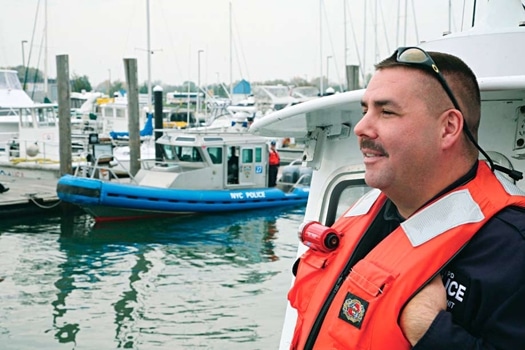
| |Sgt. Thomas Horvath aboard the 55-footer Det. Luis Lopez.|
“In the winter, it’s sometimes so cold out here that there’s ice on the inside of the boat,” said Sgt. Thomas Horvath, pointing to the aluminum skeleton of the bridge on Det. Luis Lopez. “I mean, we’ve got heaters, but the cold just travels right through the metal.”
I’m riding along with Sgt. Horvath and Officers Karl Zarr and Pat Gallagher. We’re cruising the Lower Harbor on the Lopez, a 55-footer with twin 740-horsepower Detroit Series 60 engines-one of the boats the department refers to as “Kenny Hansen class.” All of the NYPD boats are named for fallen officers. Patrol Officer Hansen was a member of the Harbor Unit who drowned during a SAR training accident. Detective Lopez was killed in 1993 during an undercover drug bust.
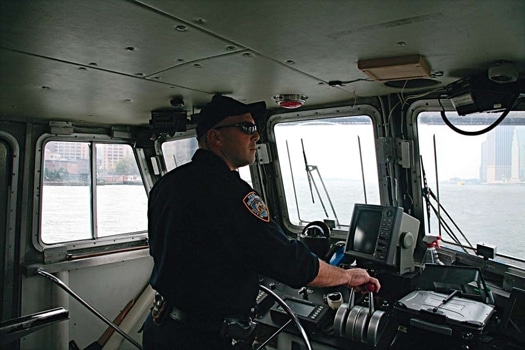
| |Officer Pat Gallagher at the helm of one of the Harbor Unit’s gladding-hearns.|
As we turn to starboard, Officer Zarr says, “Why don’t we run you over and show you the Statue of Liberty? We can’t take you around the backside, though. It’s wide open. A little-known secret.” For a split second, I almost believed him. Most of the officers’ talk is good-natured ribbing and funny banter. There’s a lot of camaraderie in the unit, which is key when you have to spend hours each day in a small pilothouse, in every kind of weather.
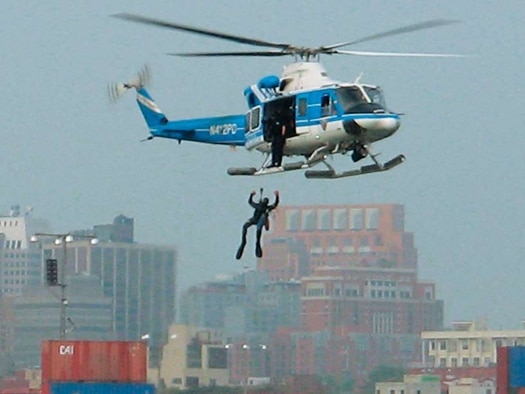
| |A SCUBA officer in full gear during a search-and-rescue exercise.|
The guys in the SCUBA unit have it even tougher, though their training process quickly separates the men from the supermen. Applicants, who come from all over the country, undergo a rigorous physical test before they even get into the program. A member of the SCUBA team explained that the testing is so competitive that there are no set number of reps, like 100 chin-ups, or 100 push-ups. The key to making it into the highly selective unit is doing one more rep than the guy who did the most. After that, there’s rigorous in-water testing. SCUBA team trainees are graded not only on endurance, but also a series of stress tests, in a safe environment. Their air supply is cut, their masks are pulled off, they’re weighted down and tied up. If they panic, they’re out.
The NYPD SCUBA Unit has the only search-and-rescue operation in the U.S. that deploys fully equipped SCUBA rescue swimmers. It’s not just swagger (for which they are also well known) but necessity. The waters of New York City are so murky that there is almost zero visibility a few feet below the surface. In fact, when conducting a search-which might be for remains but is often for evidence like handguns or cars-they deploy in teams and do a “pattern search,” using a gridwork of lines laid out on the bottom, along which they systematically feel their way.
“Our SCUBA Unit is wet 365 days a year,” said Sgt. Horvath, with pride. When they don’t have an emergency, they’re training to be ready for one. Because the closest U.S. Coast Guard helicopter is in Atlantic City, the NYPD Harbor Unit is often first on the scene at water emergencies, though they work in tandem with the Coast Guard and the New Jersey State Police Marine Unit.
But it’s not just the SCUBA Unit that makes training a part of its daily routine. All the officers of the Harbor Unit practice on a daily basis for the unthinkable. Proactive security has been a hallmark of Commissioner Raymond Kelly’s police force since 9/11, so in addition to their daily duties of aiding disabled boaters, discouraging or recovering suicidal “jumpers,” and patrolling for crimes, they are actively involved in Operation Hercules. New Yorkers have become accustomed to the sight, but it’s still startling: the sudden arrival, in response to intelligence or just to create an impression of force, of combat-ready police. That’s just the visible part. In the air are surveillance helicopters and on the water, the Harbor Unit performs daily Hercules tasks.
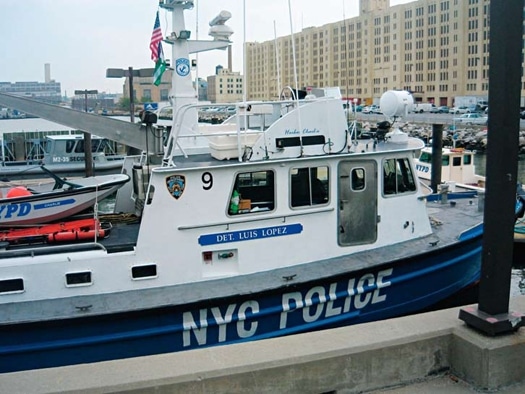
| |Det. Luis Lopez docked at Harbor Charlie.|
A typical day for an officer of the NYPD Harbor unit involves arriving at Harbor Charlie, getting briefed on what’s happening and what to be on the lookout for, receiving a specific assignment, as well as a Hercules deployment and in-service training. They do vessel escorts and special events. Occasions like Fleet Week, the Fourth of July, swimming events, and fireworks, are particularly hectic, since the more people there are out on the water, the more problems there are likely to be.
On the way back to the dock, I ask Sgt. Horvath about his most exciting day on the job and he pauses. Clearly, there has been more than one. “I guess one was the day the helicopter crashed. We were on an exercise in lower Manhattan, in the vicinity of Pier 11, when it came over the radio that a helicopter had gone in off the Wall Street heliport. That was only 500, 600 yards away from us, so we look over and there it is. Upside down with four people in the water. We radioed for assistance from Aviation and SCUBA and by the time we reached the helicopter there were seven people in the water. A cop jumped in and tied the helicopter to the boat and we got everybody out. We had to make sure we had everyone, and the pilot. Then we secured the helicopter to the pier. And then the NTSB and EMS and the media arrived ” He trails off, in part, I sense because the portion of the story that’s interesting to him is over.
“There’s tons of boredom,” said Sgt. Horvath. “And then, suddenly, there’s an emergency and you have to just go.”
Fortunately, no one’s more ready than these guys.
For more information, check out _www.nyc.gov/nypd_.
| Protecting The ProtectorsDonations help the NYPD do more. The New York City Police Foundation is the only entity authorized to raise funds for the NYPD. Counter-terrorism efforts, innovative new programs, and specialty units like the Canine, Mounted, and Harbor Units, have unusual operating expenses. The NYC Police Foundation has invested over $81 million, filling gaps the city budget can’t and keeping America’s largest law-enforcement agency one of its most effective. www.nycitypolicefoundation.org |





